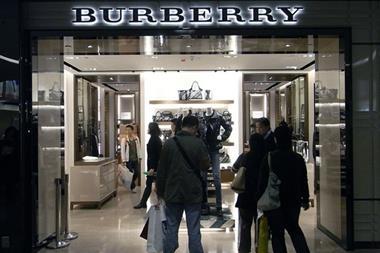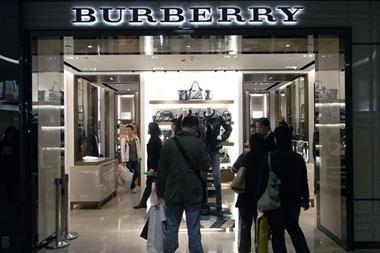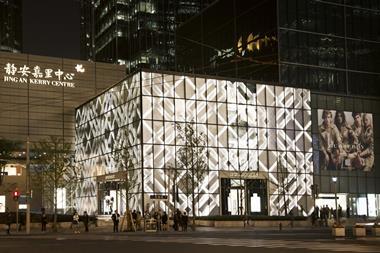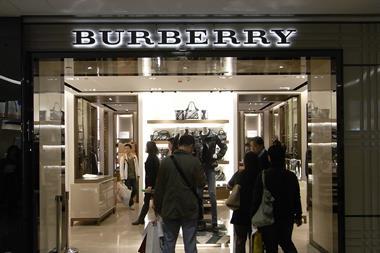Burberry’s full-year results showed a slump in profits and sales. It has embarked on a three-year cost-cutting strategy, but will it bear fruit?
The luxury retailer’s full-year figures painted a subdued picture, as adjusted pre-tax profits fell 8% to £421m and like-for-likes slipped 1%.
The retailer has embarked on an ambitious strategy to cut £100m in costs and drive sales over the next three years.
Why has it hit a bump in the road and what opportunities for growth does Burberry have?
China troubles
The shadow that Hong Kong and Macau has cast over the fashion retailer’s results over the last 12 months cannot be overstated. While the retailer’s full-year like-for-likes were down 1% overall, excluding Hong Kong and Macau its like-for-likes were up 3% year-on-year.
Hong Kong accounted for 9% of the fashion retailer’s global retail and wholesales sales, but that does leave Burberry vulnerable to the whims of the travelling luxury tourist.
Retail Remedy senior consultant Paul Thomas said: “Burberry capitalised on the opportunity in China but put all its trenchcoats in one basket and is now exposed to its slowdown.”
Burberry’s chief financial officer Carol Fairweather said the retailer was focusing on other regions in Asia to offset the drop in footfall in Hong Kong.
The retailer plans to expand its store footprint in Beijing as well as in Japan, where sales doubled year on year.
“Chinese shoppers are going to Japan to shop. We’ve seen a massive transformation there, have opened some great stores and seen very pleasing growth, so it’s a long-term opportunity for us to build off a tiny base,” said Fairweather.
“We’re a great luxury brand and we now have to become a great luxury retailer”
Carol Fairweather, Burberry
“We are very confident in our opportunity in Japan and how we are resonating with the local customer there.”
Despite these difficulties in Hong Kong and Macau, Burberry is still banking on China to be a key driver of business. Fairweather said Burberry expected the majority of its global growth to come from new and existing Chinese customers over the next three years.
Cutting costs
The retailer is also seeking to cut operational costs to the tune of £100m by 2019.
That will partially be achieved by reducing the number of SKUs by 15% to 20% over the next year and creating a more localised product offering, based on customer demand and weather conditions across its global store estate.
Fairweather also said job cuts will be an “inevitable consequence” of the retailer’s cost-saving plans, but would not go into specifics about how many roles would be at stake or which departments would bear the brunt.
The retailer is also prioritising improving the bricks-and-mortar customer experience across its store estate.
“We need to improve the in-store experience. We’re a great luxury brand and we now have to become a great luxury retailer,” maintained Fairweather.
Verdict analyst Andy Hall observed: “A renewed focus on in-store service and productivity would bring Burberry in line with the focus of luxury peers and would create a leaner, fitter operation with which to take the blows being dealt by declining global demand.”
Burberry has ambitious plans to improve its retail performance across its products and people. However, some analysts doubt that the retailer has the right leadership structure to deliver a turnaround in its sales and profits.
Christopher Bailey took over the chief executive role from Angela Ahrendts when she joined Apple in 2014, alongside his responsibilities as chief creative officer.
The fashion retailer’s latest results will raise questions about whether Bailey is stretched too thin.
“The appointment of a commercially savvy number two is now imperative to deliver against the ambitious plans laid out in the prelim statement,” says Thomas.
“With trade slowing in Europe and fluctuations in the US markets, China is not the only problem Burberry has. This could be a defining year for Burberry and for Bailey.”


























No comments yet